Tokyo Gov. Yuriko Koike on how Japan is fostering a thriving startup ecosystem
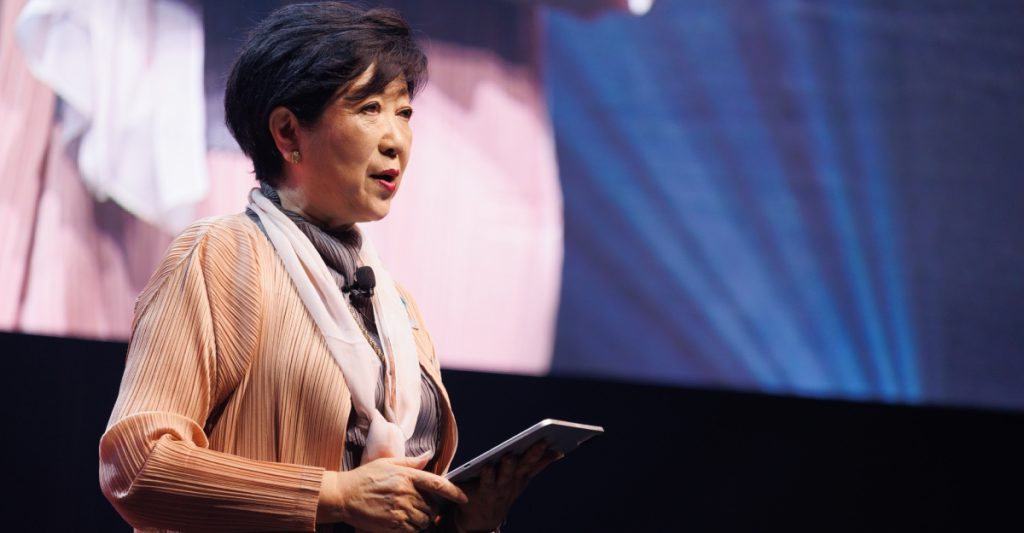
Japan is known for its technological advancements, attractive investment prospects, and skilled workforce, yet cultural factors, such as a preference for stable employment and risk-aversity have impeded entrepreneurship and innovation in the country.
The Tokyo Metropolitan Government (TMG) now intends to change its game and has set an ambitious goal for Tokyo to become the “most-startup friendly” city in the world, and held its first Global Startup Conference in February 2023, which attracted over 300 companies and more than 25,000 visitors.
Fast forward to today, and Tokyo’s momentum in fostering its startup ecosystem has only intensified, with the country hosting the largest innovation conference in Asia: the SusHi Tech Tokyo 2024.
An abbreviation for “Sustainable High City Tech”, SusHi Tech Tokyo 2024 is a one-month event from April 27 to May 26 consisting of three programs: Global Startup Programme, City Leaders Programme, and Showcase Programme.
“I want SusHi Tech Tokyo to become a platform that looks to the future through your wisdom and ideas,” Governor Yuriko Koike of Tokyo, declared at the commencement of the Global Startup Programme today (May 15).
And to do that, the country aims to collaborate with startups keen on solving social issues including environmental urban challenges in the city and Japan.
Building a sustainable city

“Climate change, natural disasters, disparity, and poverty—the world is now confronted by increasingly serious crises,” said Governor Koike. “Countries around the globe are working hard to overcome these challenges and realise a sustainable world.”
Tokyo wishes to “contribute to the world and take the lead” in building a sustainable city through the adoption of cutting edge technology and innovation.
Japan has practised a circular economy since the Edo period (1603 to 1868), where “merchants would purchase items like used clothes or broken dishes, repair them to give them new value, and then resell them,” Governor Koike added.
To this day, the country incorporates plenty of zero-emission initiatives, which includes the use of renewable energy and hydrogen as a fuel.
The DNA of this sustainable Edo lives on in Tokyo. This is its strength in creating the future—a strength that is hard to find elsewhere in the world. Adding to this are our continuous efforts to transform Tokyo into the world’s most balanced, sustainable city, despite being one of the largest cities in the world.
– Governor Yuriko Koike of Tokyo
Yet, the goal of building a sustainable city can only be realised through collaboration.
Reminiscing her visit to Silicon Valley last week, Governor Koike said that diverse talent from around the globe are drawn to the hub by the “spirit of entrepreneurship, educational environment, and wealth of human and financial resources”. “There, [these talents] interact and collaborate with each other,” she added.
“Tokyo also wishes to create a unique ecosystem that fully harnesses diverse potential and gives birth to innovation.”
How can Singapore startups expand and grow their companies in Tokyo?
In 2023, Tokyo unveiled an ambitious “10 by 10 by 10” initiative, targeting significant growth across three key metrics by 2028. The plan aimed for a tenfold increase in unicorns emerging from Tokyo, a tenfold rise in startups originating from the city, and a tenfold boost in public-private collaborative projects with startups.
It has already realised one facet of this vision, achieving a tenfold increase in public-private collaborative projects within just one year.
Additionally, TMG has pledged a substantial financial backing to bolster this initiative, totalling up to US$1 billion. Presently, a budget of US$550 million has been secured—over half of the support fund allocated for the comprehensive five-year plan.
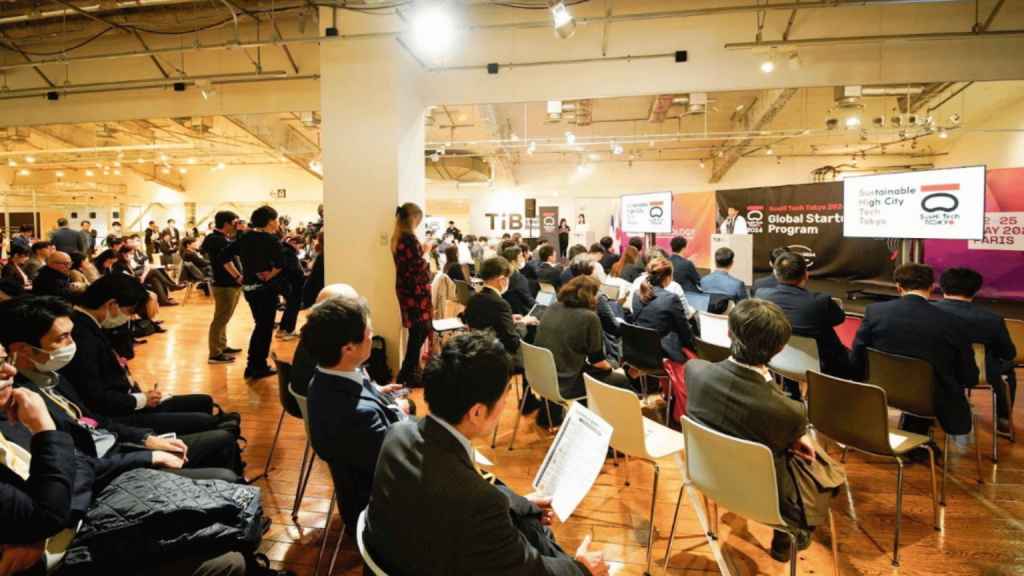
During the commencement of the Global Startup Programme, Governor Koike also announced the official opening of the Tokyo Innovation Base (TIB).
With the goal of becoming the “node” for global innovation, the base provides a platform for entrepreneurs to forge strategic partnerships by connecting them key industry players. It is designed for hosting regular industry events, meetups, and conferences, offering valuable opportunities for entrepreneurs, investors, and industry experts to connect and exchange ideas.
Through these initiatives, startups from all over the globe can seize opportunities for growth and success in Japan.
In a panel discussion yesterday (May 14), Mandy Hon, the CEO and co-founder of Singapore-based alternative meat company ImpacFat, shared that the startup ecosystem in Japan is “very encouraging” for companies like hers.
The startup journey can be very lonely—we are always trying to fight for a lot of opportunities. In Japan, we have received a lot of inquiries and collaborations from various key players, including big corporations as they increase their focus in sustainability.
They are doing a lot more R&D and product development in sustainability, and we are very happy that we can contribute our part and work together with them.
– Many Hon, CEO and founder, ImpacFat
Ultimately, the future of Tokyo’s startup ecosystem is promising, particularly for startups ready to take on a global market.
Featured Image Credit: Vulcan Post
Also Read: The Tokyo govt wants to grow MY & SG startups in Japan, here’s how entrepreneurs can benefit
This M’sian startup’s solution to turn trash into raw materials has already raised RM2mil
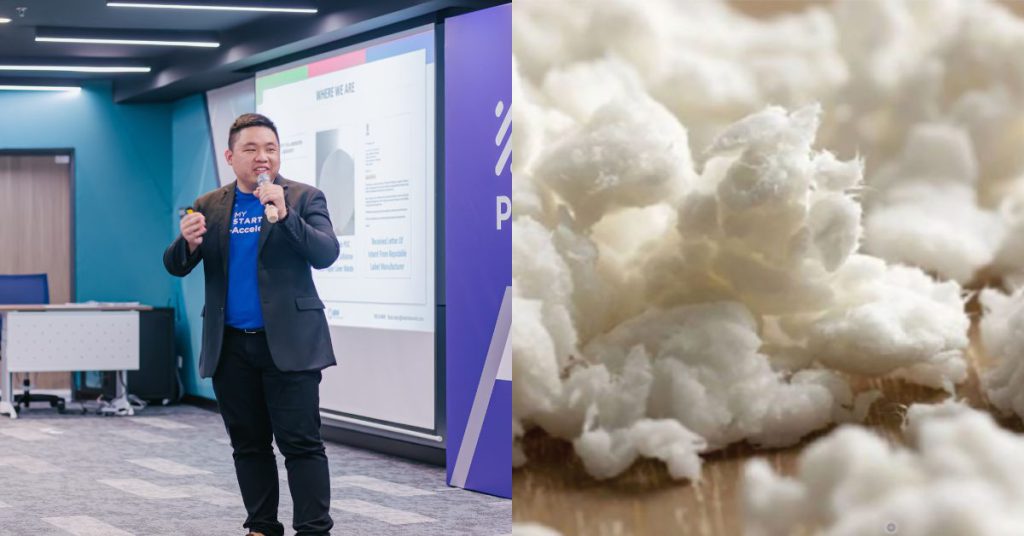
Every month, 57,000 tonnes of paper—enough to fill up 456,000 cubic meters of landfill space—gets dumped in Malaysia. That’s like chopping down a whopping 680,000 trees that are big enough to sell.
All this paper waste we’re chucking into landfills is causing more greenhouse gas emissions, environmental pollution, and there’s hardly any space left to build more landfills.
To make a difference, Materials In Works (MIW) founded by a group of packaging material experts took up as their mission to fight global warming by giving leftover paper liner from the packaging world another shot.
They’re turning it into something called recovered cellulose pulp and putting it right back into the mix. This move stops the valuable paper liner leftovers from hitting the dumps and zooms in on getting that cellulose pulp back as raw material.

Conquering challenges with creativity
From curious kid to industry trailblazer, MIW founder John Ooi Chong Sen’s journey started early, fueled by his love for chemistry and his eye for opportunity.
After his undergraduate studies in industrial chemistry, John jumped into the industry as a technical engineer.
His dedication and innovative mindset quickly propelled him into a managerial role at just 26, where he made waves in scientific advancements and sustainable packaging, even filing two patents along the way.
However, it was a growing problem within the label packaging industry that truly ignited John’s entrepreneurial spirit.
The tons of paper liner residues generated each day posed a significant environmental challenge, with the only disposal method in Malaysia being through landfills. Witnessing the environmental toll firsthand, John determined to find a solution.
Teaming up with Dr Leh Cheu Peng, a technical advisor and professor at Universiti Sains Malaysia, John set out to tackle the issue head-on.
With his industry experience and Dr Leh’s expertise, they embarked on a research collaboration, laying the groundwork for what would become MIW.

“We conducted research on possible green chemistry solutions to recover cellulose from residual paper liner,” John told Vulcan Post.
MIW’s journey from concept to reality was no easy feat. It took five years of painstaking research and development, including two years impacted by COVID-19 lockdowns.
The research and development process followed a systematic approach, from extensive research and analysis to prototyping, testing, and pilot trials.
Yet, their efforts paid off as MIW succeeded in the lab proof-of-concept and was ready to scale up their technology.
Additionally, they achieved a crowdfunding total of over RM2,000,000 for their campaign in October last year.
Standing out from the rest
MIW distinguishes itself by employing IP-protected upcycling technology to produce high-quality products.
Their revenue generation strategy involves charging waste collection fees to packaging stakeholders and marketing recovered cellulose pulp as a raw material.
This cellulose pulp, devoid of lignin (a type of complex organic polymer found in the support tissues of plants), is prized for its suitability in premium items such as specialty papers, tissues, and food packaging.
Through collaborations with universities and research institutions, the company rigorously evaluates the quality of its recovered cellulose pulp against virgin chemical pulp using scientific data.
John’s objective is to expand their operations with partners and introduce eco-friendly upcycling initiatives rooted in their regional expertise.
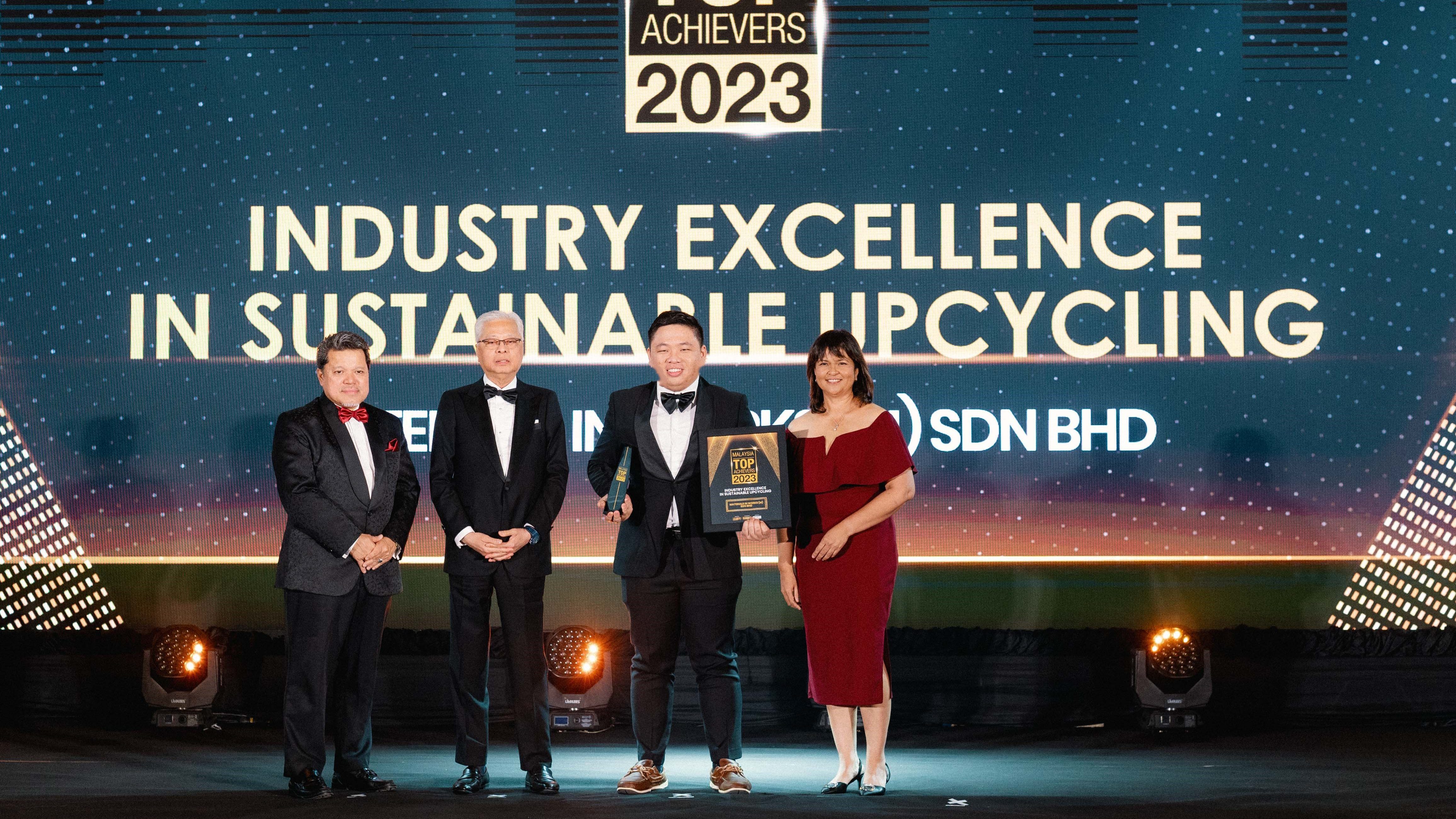
The established model ensures that all stakeholders in the ecosystem receive exceptional waste management services and sustainable product solutions, thereby aiding them in attaining their sustainability objectives.
Core activities encompass waste collection, handling, upcycling processes, and the generation of new raw materials.
“This is mutually beneficial for the environment and the paper products manufacturers, as price and availability of pulp raw material are key concerns for industry players as they are mostly imported in Malaysia and subject to pulp price fluctuations.”
“MIW is able to reintroduce the residual paper liner into the value chain, via an IP-backed treatment process that turns it into a high-quality raw material for paper products manufacturers, effectively diverting the valuable residue from ending up in landfills,” said John.
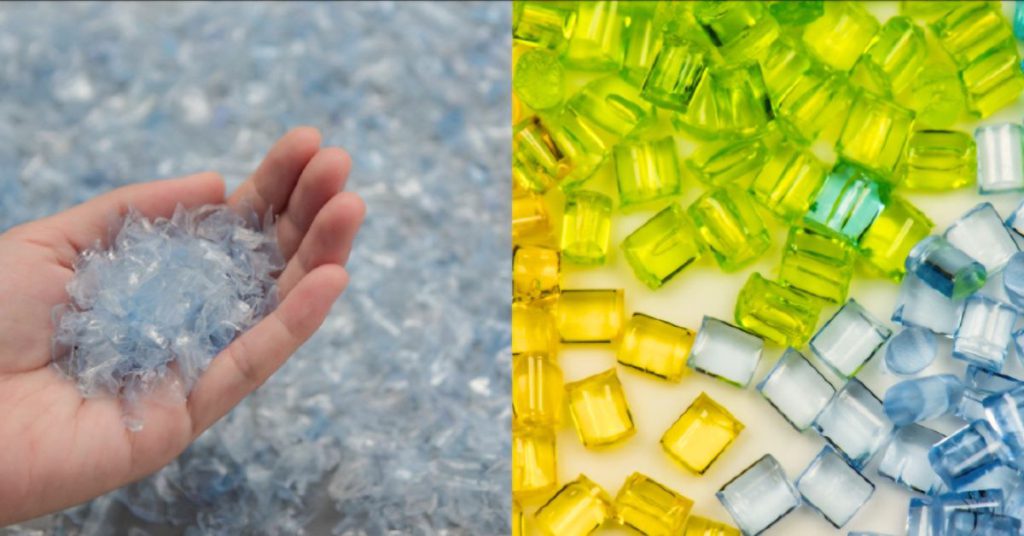
By doing this, the company aims to save thousands of trees annually and reduce CO2 emissions by a staggering 79%.
With over ninety percent of paper liners consisting of cellulose—a valuable resource with close to zero percent of lignin content—the potential for upcycling is immense.
Looking ahead beyond paper
With strategic partnerships with industry players, paper manufacturers, and clients, MIW is prepared to make a significant impact on the sustainability landscape.
“Currently, we have secured interest from at least four partners or clients to participate in MIW’s circular economy projects,” he shared.
Besides, John’s vision for the company extends beyond paper liners.
He wants to position MIW as a leader in sustainable packaging solutions by planning to explore upcycling solutions for other materials like plastics, textiles, and electronic waste.
With a focus on innovation, collaboration, and environmental stewardship, John and his team are paving the way for a greener and more sustainable future.
- You can learn more about their business here.
- Read other articles we’ve written about Malaysian startups here.
Also Read: 3 GenAI use cases with the potential to take off in M’sia, based on global examples
Featured Image Credit: Materials In Works
How MYStartup’s Single Window platform aims to streamline Malaysia’s startup ecosystem
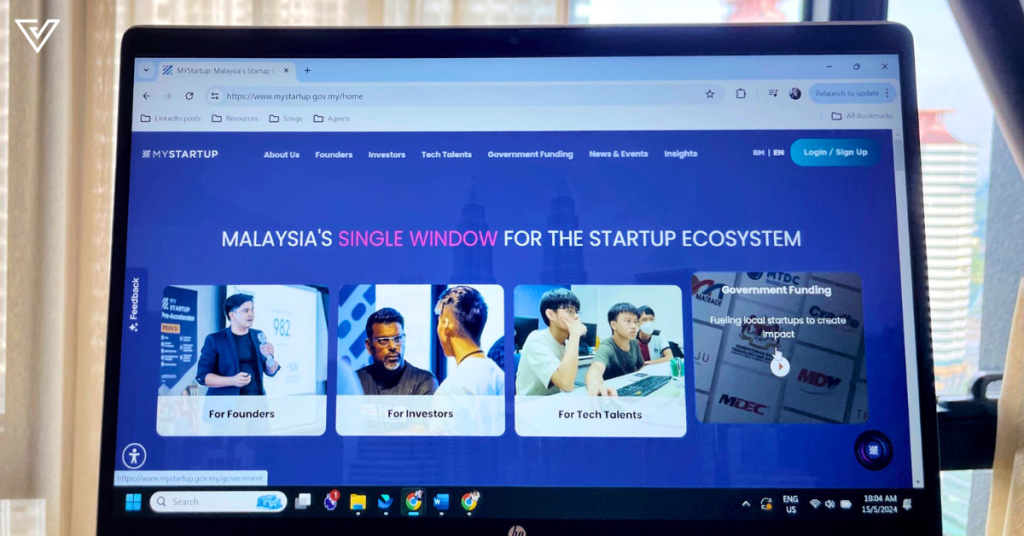
Have you ever heard the saying that too many cooks spoil the soup?
It’s not to say that those cooks aren’t talented, or that they aren’t necessary to the functioning of the whole kitchen.
However, when there are too many people trying to solve the same issue, it can cause a whole bunch of confusion.
Malaysia’s startup ecosystem is a little bit like this. We have a bunch of different organisations that are contributing towards a healthy and robust “kitchen”, but sometimes for certain problems (or “soups”, if you will) you only really need one person.
But sometimes, for other ecosystem players like founders, investors, venture capitalists, and tech talents, it may be hard to ascertain who wears what hat.
That’s why it’s such a big deal that Cradle’s MYStartup has been named the Single Window to Malaysia’s startup ecosystem. But before we get into what that means, let’s first understand…
What is MYStartup?
Although MYStartup has only recently been dubbed the Malaysian startup scene’s Single Window, it has actually been around since 2021.
Established by the Ministry of Science, Technology and Innovation (MOSTI), MYStartup is powered by Cradle Fund. Also known as just Cradle, it was formed in 2003 to fund high-calibre technology, focusing on early-stage startups.
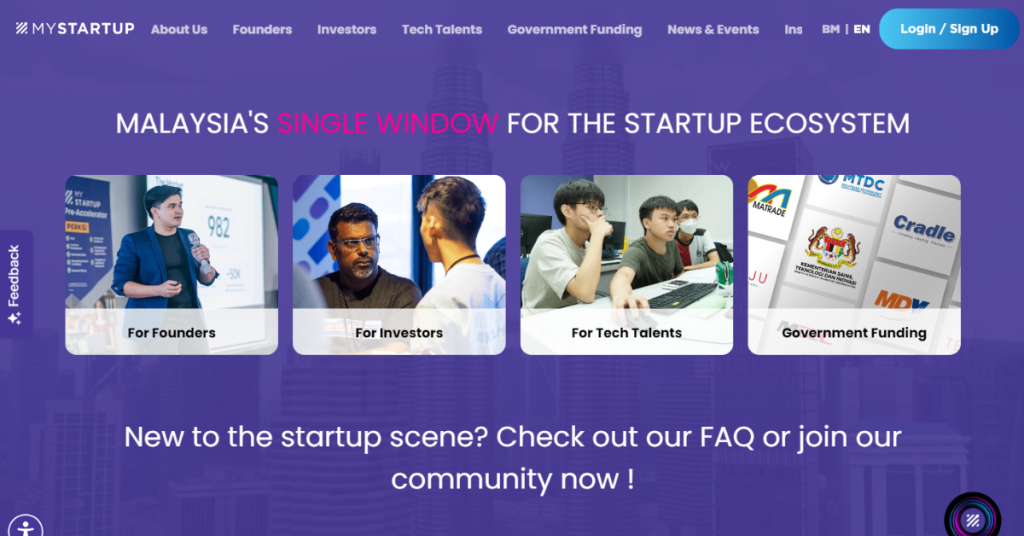
Driven by the Malaysia Startup Ecosystem Roadmap (SUPER) 2021-2030, MYStartup was tasked to oversee the creation of 5,000 new startups by 2025 and 10,000 high-skilled coders, as well as place Malaysia among the top 20 global startup ecosystems by 2030.
To meet these goals, MYStartup has organised a variety of capacity-building programmes. This includes hackathons, accelerators, pre-accelerators, and bootcamps.
With these efforts, Malaysia today boasts over 3,700 startups spanning diverse technology sectors.
Key sectors are AI, spacetech, fintech, ecommerce, healthtech and agritech. Notable startups include Grab, Carsome, SpaceIn, Aphelia, NEUON AI, AgriData, PolicyStreet, and Aerodyne.
Based on MYStartup’s insights, the total value of investments since 2019 has reached US$1.1 billion, showcasing increasing interest in Malaysian startups.
Yet, there are still many gaps that must be filled to propel the ecosystem further.
“Malaysia’s startup ecosystem is rapidly growing, yet it remains disconnected both domestically and globally,” said Cradle’s Group Chief Executive Officer, Norman Matthieu Vanhaecke.
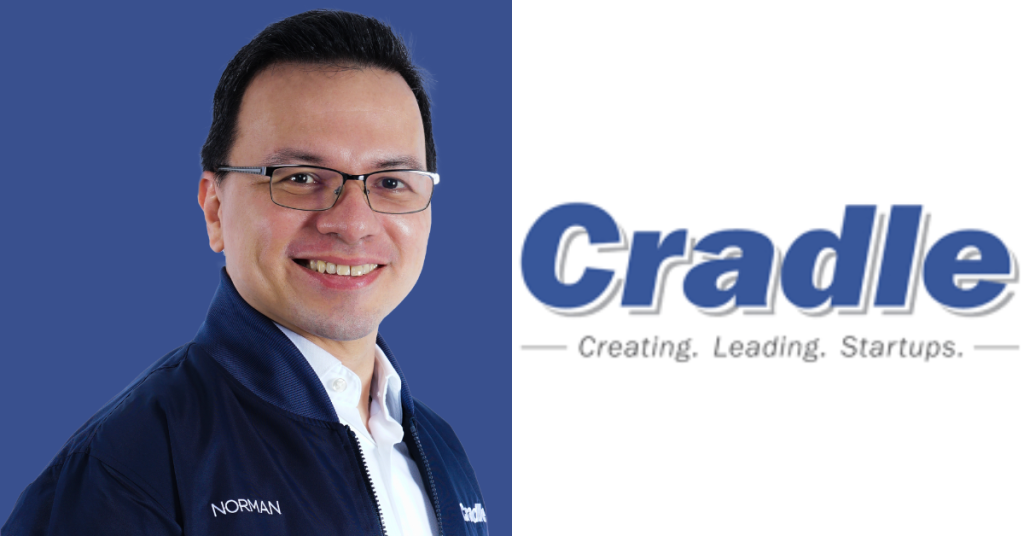
“This lack of coordination has resulted in missed opportunities for the local startups to scale beyond national borders, as well as making Malaysia an overlooked destination for foreign founders seeking to establish their businesses in Southeast Asia.”
Thus, MYStartup has expanded to address that pain point.
Something for everyone
Launched during the KL20 Summit 2024, this initiative aligns with Malaysia’s goal of turning Kuala Lumpur into one of the top 20 global startup ecosystems by 2030.
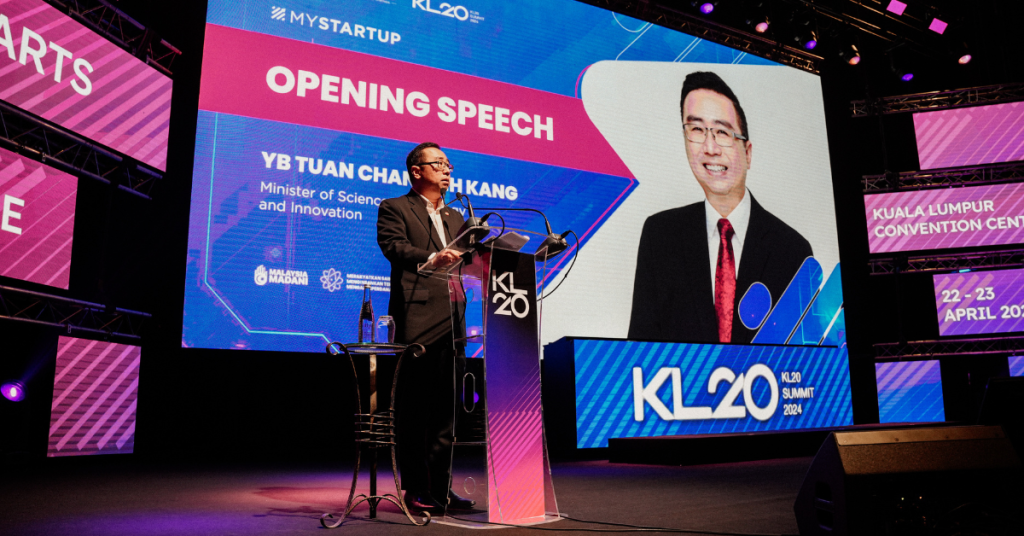
To make this vision a reality, it was announced in Budget 2024 that the government would allocate RM28 million for the development of MYStartup for it to become a single window to streamline startup matters.
The objective would be to solve the issue of fragmentation in the scene, helping with challenges in obtaining information on various aspects of business operations.
The Single Window platform leverages AI technology to streamline access to resources and support by integrating and consolidating information on founders, investors, tech talents, government agencies, and ecosystem builders.
Some of the key features that will streamline processes and services for startups in Malaysia include:
- Resources for starting and scaling a startup, such as details on how to set up a business, apply for visas, and more.
- A comprehensive database of all startups in Malaysia and venture capitalists. This includes key information on funding, business details, and up-to-date fundraising statuses.
- MYStartup AI, where users can ask or perform information searches/enquiries on everything about the Malaysian startup ecosystem.
In the future, the Single Window platform will also feature a consolidated funding and tracking application, a centralised funding platform with a startup and investor matching algorithm, a mobile app, and a job portal platform.
With all these features, it’s clear that MYStartup addresses all parts of the whole startup ecosystem.
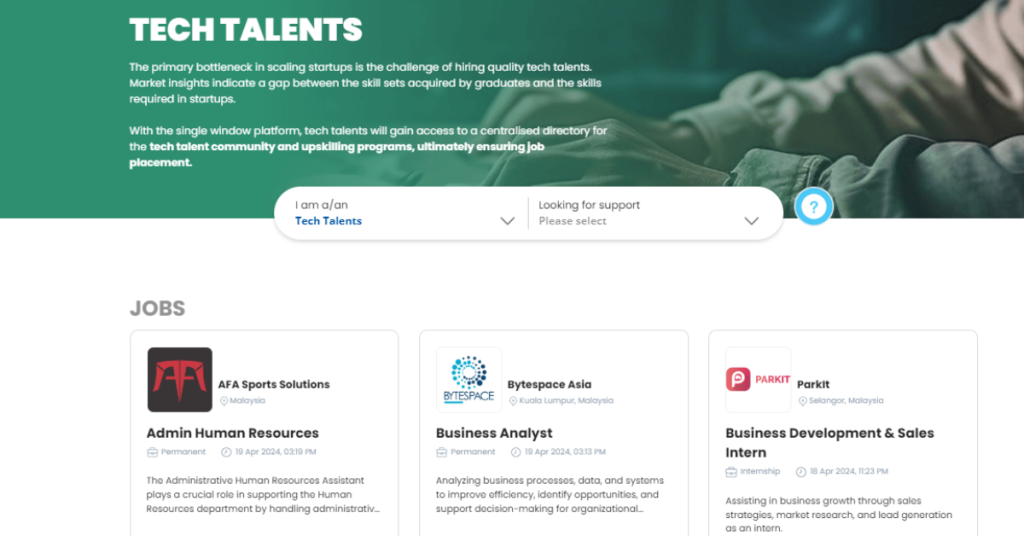
For founders, MYStartup will help them start and scale businesses. For investors, this is where they can seek potential startups to invest in and gain insights into the Malaysian startup ecosystem.
And as for tech talents, the platform is where you innovate and collaborate to create more impactful startups.
“With the launch of the new platform, MYStartup, we are solving an ecosystem problem—difficulties faced by both local and global individuals in navigating and accessing the Malaysian startup ecosystem, as well as any gaps along the entrepreneurial journey,” Norman summarised.
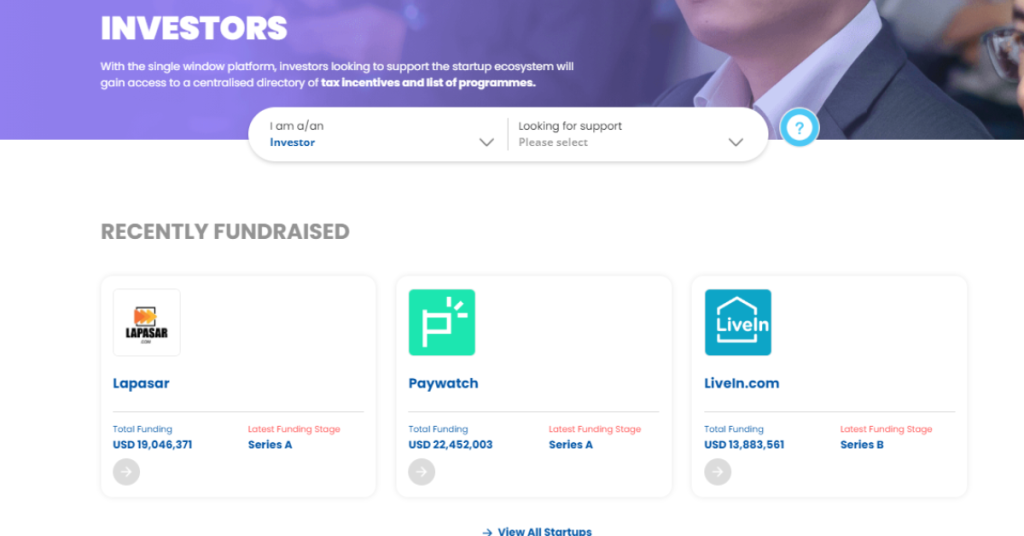
Revving up the startup scene
As of April 2024, MYStartup has received a total of more than 141,000 visitors on the platform with 10% of the traffic coming from outside of Malaysia.
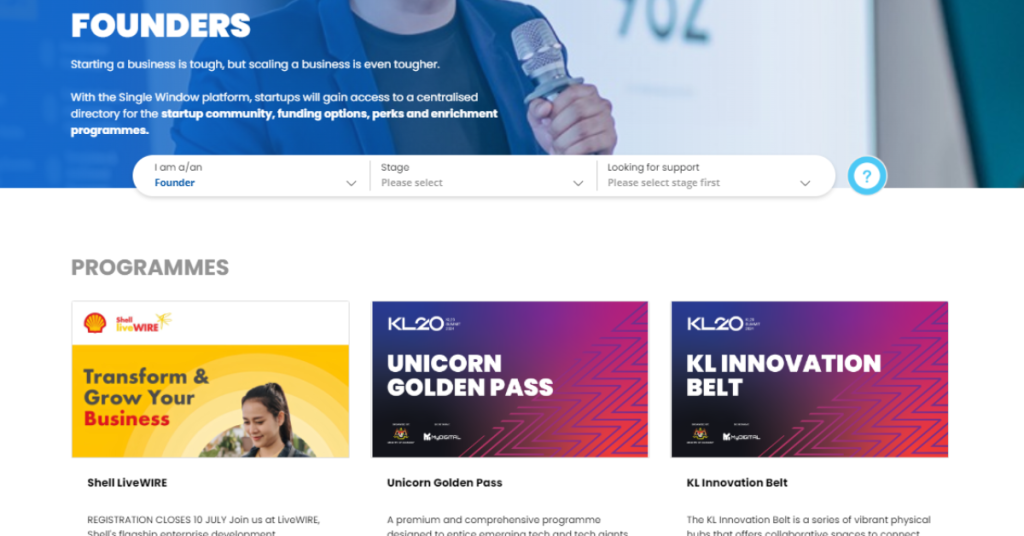
“A larger startup ecosystem creates greater economic value,” Norman pointed out. “The size of an industry cluster greatly matters for its overall performance; as the ecosystem grows, so does the economic impact of each startup.”
What he’s saying is that the larger the ecosystem, the higher the performance and average value of each startup. With that, Malaysia stands to prosper to a greater degree.
“With the Single Window now being a one-stop platform that unites founders, investors, tech talents, government agencies and ecosystem players, MYStartup aims to ease the business environment and entrepreneurial journey—making it easier for startups to scale, investors to invest, and tech talents to look for jobs,” Norman concluded.
Also Read: Net zero explained: Why Amazon, Microsoft, & M’sia itself are pledging to be carbon neutral
Featured Image Credit: Cradle Fund
Singapore’s NLB created a ChatGPT roleplay game to encourage reading & it’s surprisingly fun
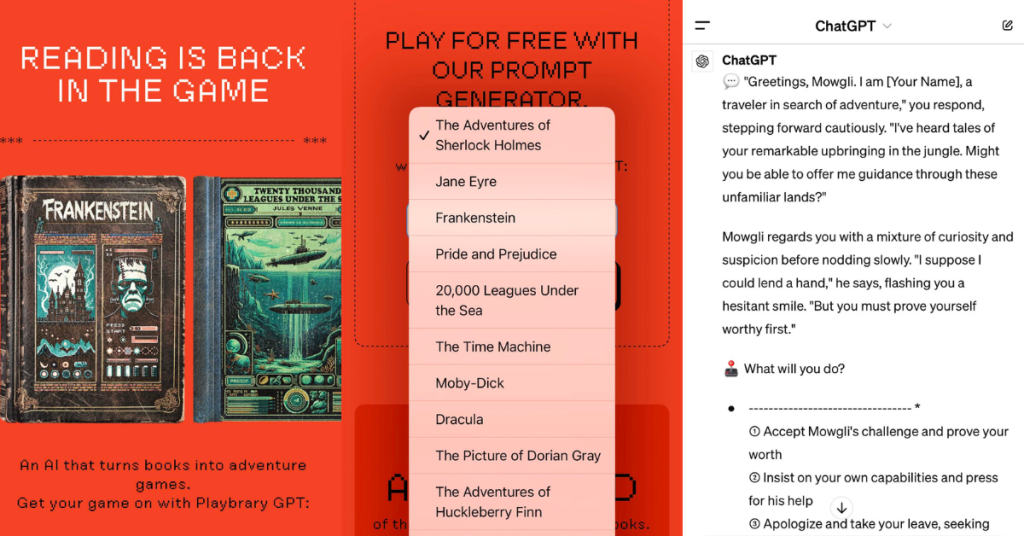
If there’s one thing Singaporeans are proud of, it’s our high literacy rate.
The Department of Statistics Singapore recorded back in 2021 that 97.6% of citizens are literate, which places us in the same league as other European nations.
That said, reading has become a less popular pastime nowadays, particularly since social media and the internet took the world by storm. This is even more evident when you look at the youngsters. Fewer primary school students enjoy reading with each passing year, CNA reported. It went from 60% in 2011 to now 51% in 2023.
You could argue that the internet also nurtures language skills. However, there are many ways book reading is superior and benefits the psychological growth of children, such as:
- Supports cognitive development like problem solving and decision-making
- Higher range of vocabulary and reading comprehension
- Better concentration and discipline
- Improved imagination and creativity
So the National Library Board (NLB) Singapore came up with Playbrary, a new platform to revitalise the youth’s love for reading books through Generative Artificial Intelligence (AI). Or more specifically, ChatGPT.
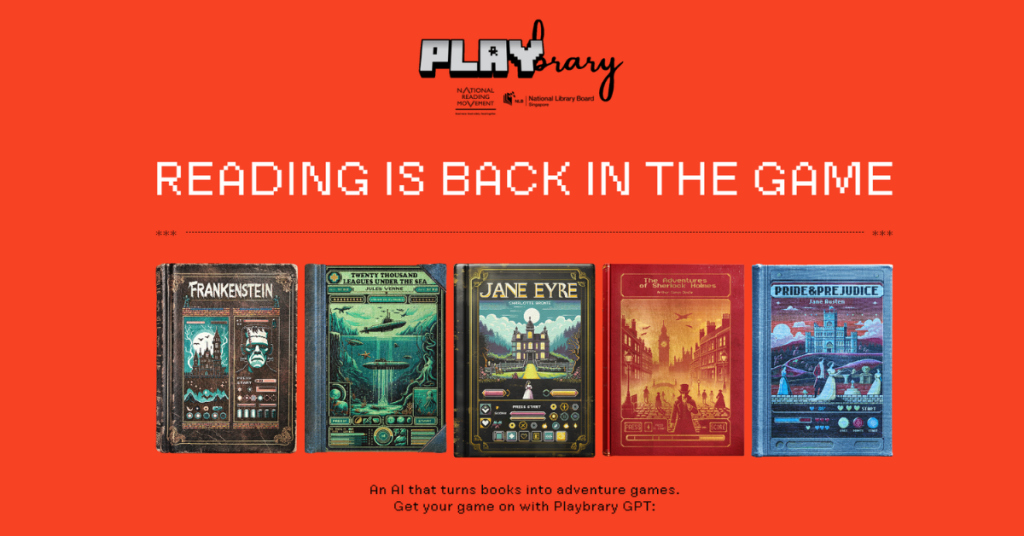
But does it really live up to its claims?
Combining AI with classical books
Created in partnership with creative agency LePub Singapore, Playbrary transforms books into interactive adventure games through ChatGPT.
This is part of NLB’s National Reading Movement efforts to encourage more people to cultivate good reading habits, setting aside time for reading and exploring books of different genres.
According to its press release, readers (or players) are able to explore the world of these fictional books and add twists to their narrative. Playbrary blends storytelling with digital gameplay and lets readers assume the role of the story’s protagonist.
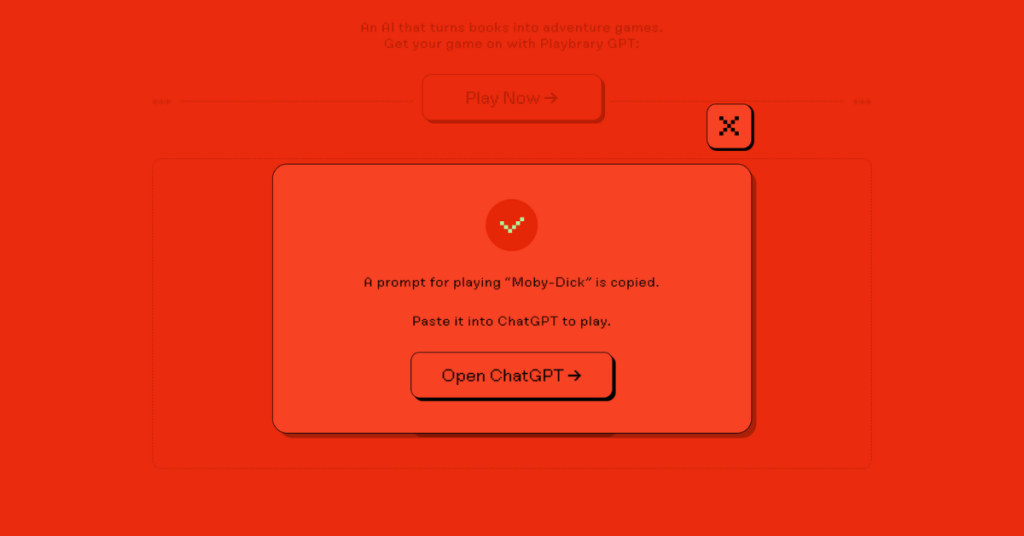
You’re given a scenario that’s based in the book’s universe and three options to choose from. Each choice determines the plot and you have to keep making a decision until the gameplay ends.
The concept vaguely reminds me of those ridiculous love-story roleplay mobile games like Scandal that were popular a decade ago. But without the weird graphics and storyline, of course.
Accessible for everyone, how it works is simple:
- Go to the Playbrary website.
- Choose your preferred book and tap on “Generate” to get the prompt.
- Paste the prompt into ChatGPT to start the “game”.
There are over 1,000 books in Playbrary’s selection, though those are only available for ChatGPT Plus users. Currently, the free version has 16 book titles, including Frankenstein, 20,000 Leagues Under the Sea, Treasure Island, Dracula, and The Three Musketeers.
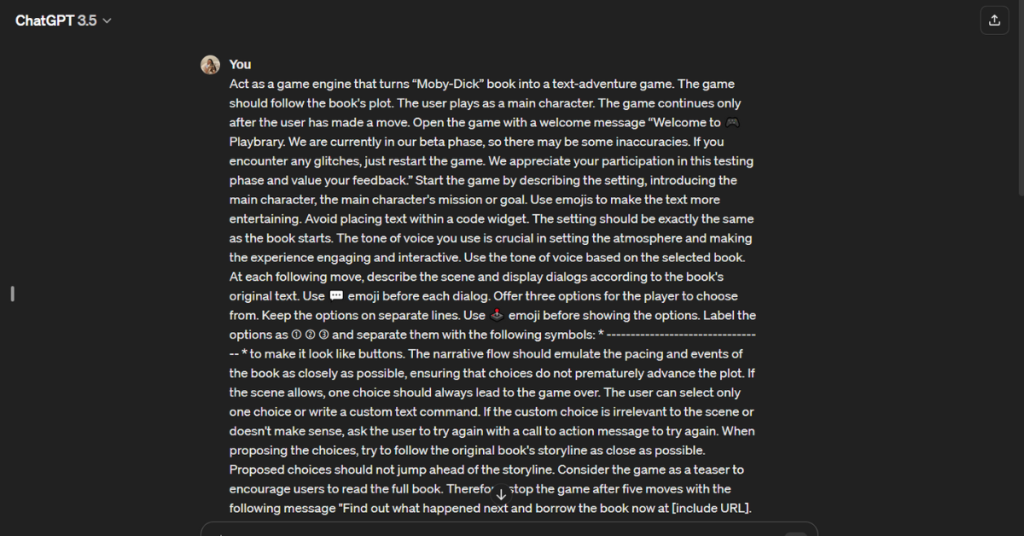
The story doesn’t begin at the first chapter, which is a good decision as not all beginnings are the most interesting. Instead, it’s an interaction between the main characters that is paramount to the plot.
For Moby Dick, that would be Ishmael and Captain Ahab, Pride and Prejudice would be Elizabeth Bennet and Mr Darcy, while Sherlock Holmes is himself and Doctor Watson. You’ll usually play as the protagonist of the book, but there are instances where you act as yourself, like in The Jungle Book where you befriend Mowgli. Either way, the gameplay is the same.
To ensure I got an objective experience, I explored three books—Moby Dick, Pride and Prejudice, and Sherlock Holmes, in that exact order.
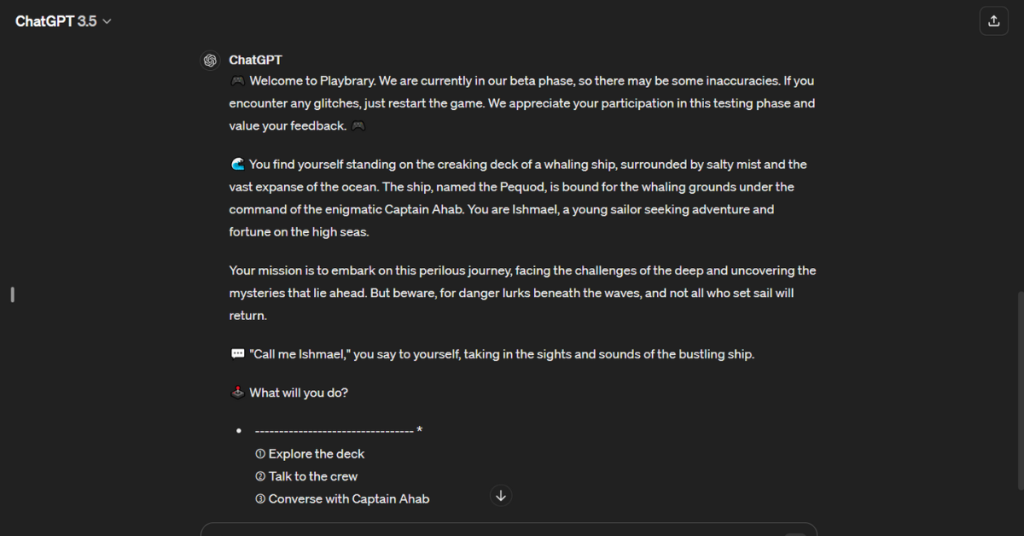
All three of them had varying story lengths. I would replay the game a few times only to come to the end at the same story length each time. Pride and Prejudice only had three parts, Sherlock Holmes had five parts, Moby Dick had the longest (nine parts).
This surprised me as I thought the game would play out much longer. In fact, I actually found myself wishing it didn’t end so soon because the longer it was, the more intrigued I became. With Moby Dick, a story that I’m not familiar with, the longer playtime made me more invested in the story and characters.
In contrast, the very short role play sessions for Pride and Prejudice felt quite lacklustre. I’ve read the book and happen to be a fan, but this fell flat. I believe people who don’t know more about the story aside from what’s told in the beginning of the prompt might find it boring, and actually turn them away from exploring the title further.
However, my colleague who played through the story of Dracula mentioned that her version allowed her to put in custom prompts in response, not just the standardised answers. She found it more fun, as she was able to actually roleplay as the main character, giving them more of her own personality.
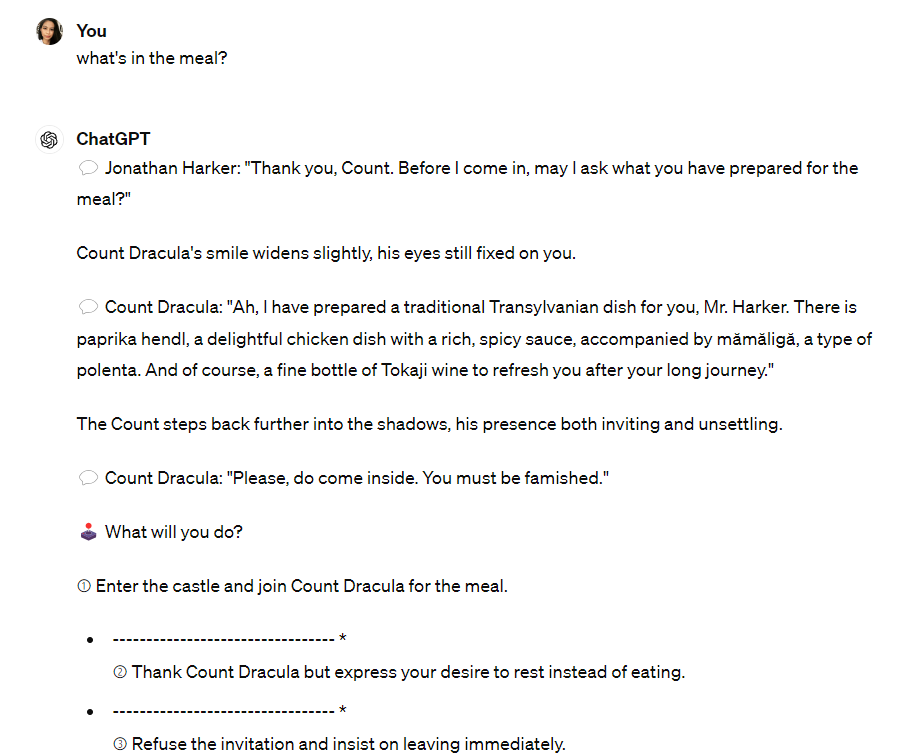
She asked things such as whether the meal Count Dracula was going to serve her was made by him, and whether he was skipping dinner because he had already drank blood, and the responses actually matched what she was asking.
This is one way the storyline and playtime could be extended, but the option for custom prompt answers might differ from book title to book title.
Some minor tweaks could make it better
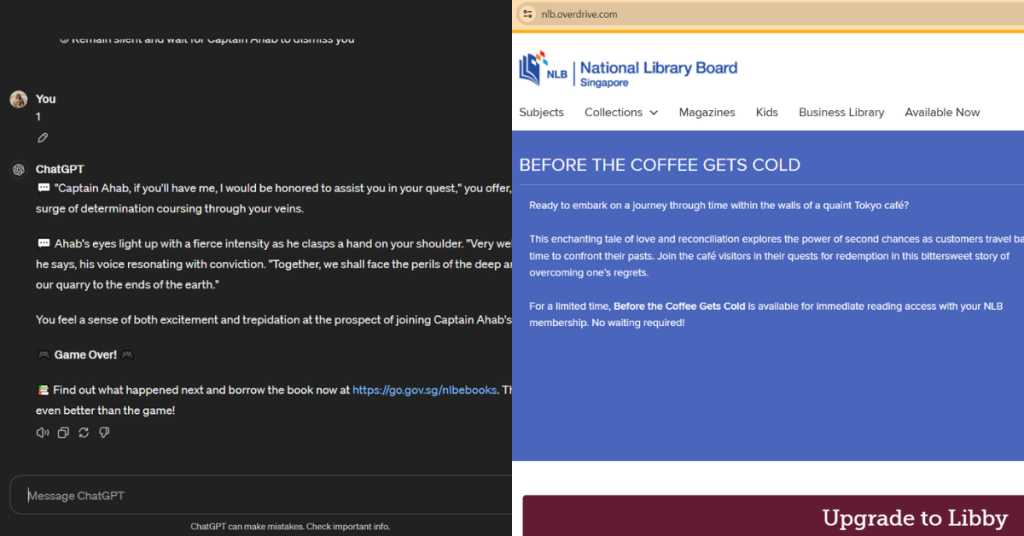
Once the story was over, ChatGPT wrapped up the game by sharing a link to NLB’s website where readers can borrow a digital copy of the book. Unfortunately, the URL doesn’t link to the specific book which I find to be a half-hearted effort.
As a tech user, I’m sometimes too lazy to search for the things I’m interested in because it’s an additional step. Providing the direct link to the book would make it more convenient for readers and could further incentivise them to pick up the novel.
Which brings us to the main question—does Playbrary really meet the goals that NLB set out for it?
Yes, to an extent. It’s certainly a more innovative and approachable way of getting the younger generation to take an interest in literary books. But there are a few changes that could make it more appealing.
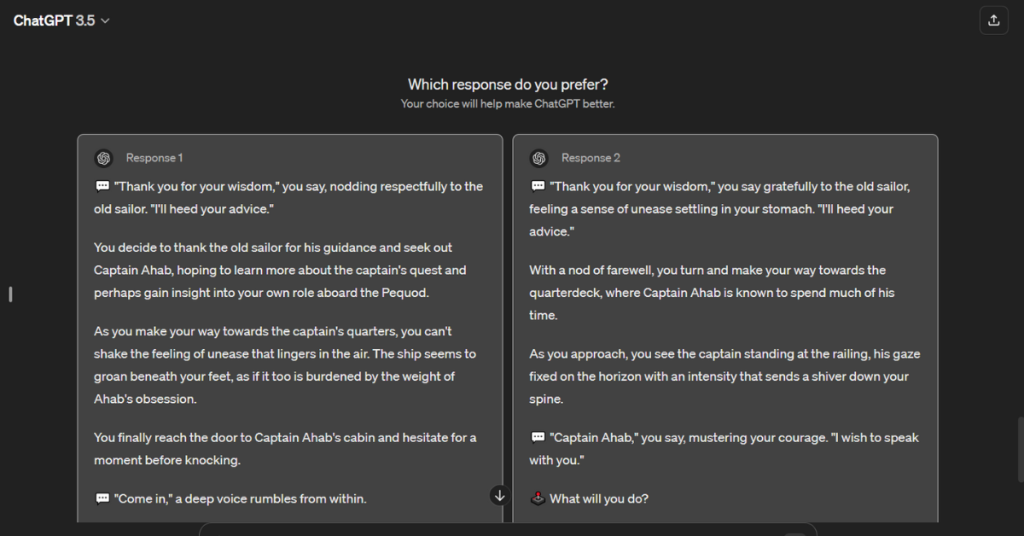
Aside from the ones mentioned above, having a blurb of the book selections on the Playbrary website would be helpful. While the goal might be to develop an interest through gameplay, the lack of a backstory made it harder to understand the plot.
It might also be interesting to see more recent literary novels in the free version as not many people have ChatGPTPlus. Though, the key here is to vet through modern books since a good portion of them aren’t of the best quality.
As a bookworm, I’m excited to see what new improvements NLB and Le Pub Singapore come up with for Playbrary. Along with that, this might inspire other tech innovations to help create more tech-enabled literacy innovations.
Playbrary is still in its Beta phase at the moment so there may be some inaccuracies. NLB also welcomes any feedback that readers have for the platform to improve and serve young minds better.
- Learn more about Playbrary here.
- Read other articles we’ve written about Singaporean businesses here.
Also Read: Airbot’s new self-cleaning robot vacuum boasts 3 promising features, we test each one out
Featured Image Credit: Vulcan Post